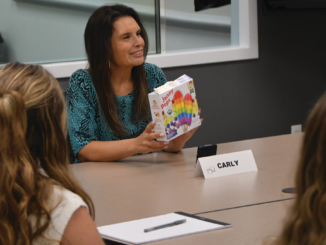
Reviewed by Oana Popa Rengle
Founder
Anamnesis
Bucharest, Romania
oana@anamnesis.ro
“When we speak about misbelief, we are not just talking about them—the people who believe all kinds of odd things. To some degree, we all have the characteristics of misbelievers.”
Many readers may know Dan Ariely, the James B. Duke professor of psychology and behavioral economics at Duke University, who is widely recognized for his work in behavioral economics.
What you might not know (I certainly didn’t) is that during COVID, Ariely unexpectedly became a target of conspiracy theories. His advisory work with various governments on social distancing and mask-wearing sparked accusations that he was a master manipulator and a dark, sinister figure. (Side note: I am very aware of the other controversy that Ariely has found himself in since 2021—the data fabrication issue—and I will get back to that by the end of my review.)
During the pandemic, the online hostility against him became so intense that it significantly impacted Ariely’s mental health. His coping mechanism was to try to understand the phenomenon and to use his social science expertise to make sense of what was happening to him.
He uses the term misbelief to describe a distorted lens through which people begin to view the world and describe the world to others. Misbelief is also viewed as a process: a funnel that pulls people in further and further to misinformation. Not the harmless 2-D funnel that we marketers use to describe the journey from awareness to purchase, but a 3-D funnel that people end up spiraling down into misinformation.
His model for the funnel of misbelief focuses on four key factors: emotional, cognitive, personality, and social. First, it considers the universal traits of our humanity, including emotional responses (like reactions to stress) and cognitive elements, particularly cognitive biases (like confirmation bias), motivated reasoning, overconfidence, or solution-aversion. These factors can drive people further into the funnel of misbelief.
Next, his model examines the differences in how individuals react to the same information, influenced by varying personality traits or states, and identifies that conspiracy theorists tend to, among other traits, display a heightened patternicity (propensity to see patterns), place greater trust in intuition over rational analysis, and have narcissistic tendencies.
Lastly, it delves into the social dimension—exploring how forming communities or groups around misbeliefs can reinforce those beliefs and how experiencing ostracism can push individuals toward misbelief.
There are two aspects that I particularly enjoyed about this book.
- Ariely periodically pauses in his narrative to offer suggestions on how his findings can be applied to not just avoid conflict and polarization but also to foster healing and bring people together.
- As a researcher, I particularly enjoyed reading about the experimental research designs that contributed to the book’s content, as many topics tackled here are difficult to research. For example, misbelievers are an extremely difficult target group for research due to their suspicious nature. Other topics, such as stress, are difficult to research without subjecting people to unpleasant experiences. It was interesting to see the challenges researchers faced and the solutions they found.
As previously mentioned, Ariely had found himself in another controversy since 2021, in which he and collaborators faced accusations of fabricating data in a study (on honesty, of all topics) that has now been retracted. An investigation by Duke University concluded that data had been falsified but that Ariely had not used fake data knowingly. I have always found myself in Ariely’s corner and secretly rooted for him to be clear of the suspicions.
Now, his book has given me one more explanation as to why, with two chapters eloquently named “Our Search for the Truth We Want to Believe In” and “Working Hard to Believe What We Already Believe.”
Ultimately, this is how Ariely would like us to use his book: to better understand ourselves and others, and how we develop, solidify, defend, and disseminate our beliefs.
From this perspective, the book is immensely valuable to qualitative researchers. It offers insights into the universal nature of belief
formation and the roles played by biases and other factors, helping us better understand ourselves and others, including our research participants.




